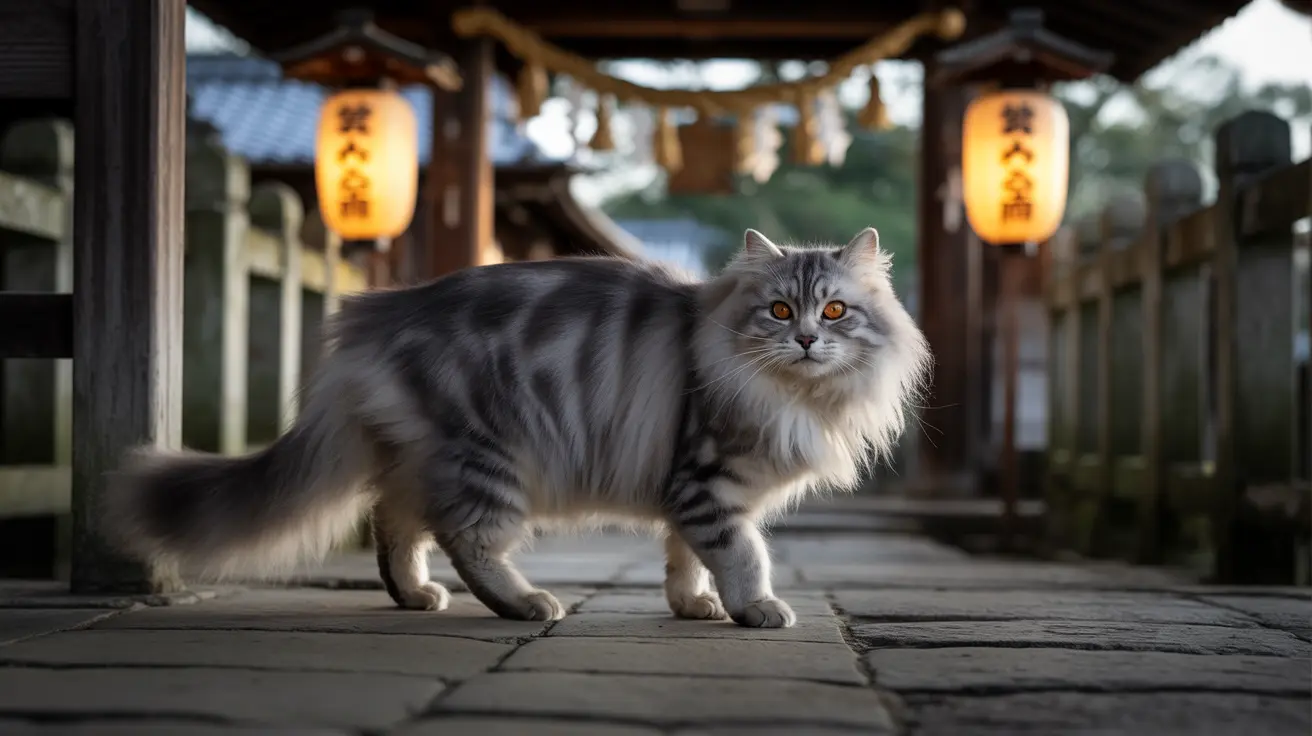The Origins of Japanese Demon Cats
The concept of demon cats in Japanese folklore evolved significantly during the Edo period (1603-1867). The Kasha, originally conceived as a "fire cart" that transported sinful souls to Buddhist hell, gradually merged with cat mythology. This fusion gave birth to the image of a fearsome feline wreathed in flames, notorious for disrupting funeral ceremonies.
Toriyama Sekien, a prominent 18th-century artist, played a crucial role in popularizing the modern image of the Kasha as a fiery demon cat. His artistic interpretations helped cement these supernatural felines in Japanese cultural consciousness.
Supernatural Powers and Transformations
According to legend, ordinary cats can transform into demon cats through various means. The most common belief suggests that cats living beyond ten years develop supernatural abilities, beginning with human speech. As they age further, their powers grow more formidable, potentially leading to their evolution into Bakeneko or the even more feared Nekomata.
These transformed cats possess an array of supernatural abilities, including:
- Shape-shifting into human forms
- Creating and manipulating fire
- Speaking human languages
- Walking upright on two legs
- Possessing extraordinary strength and agility
Kasha: The Corpse-Stealing Fire Cat
The Kasha stands out as one of the most fearsome demon cats in Japanese mythology. These creatures are typically depicted as large, bipedal cats surrounded by flames or lightning, with burning red eyes and dark fur. They're known to appear during storms and at night, specifically targeting funeral ceremonies.
Their primary supernatural activity involves stealing corpses from funerals and gravesites, either to devour them or transport them to hell. This behavior has led to various protective rituals and measures in traditional Japanese funeral practices.
Cultural Impact and Modern Influence
The influence of demon cat legends extends far beyond traditional folklore. These supernatural felines have become a significant part of modern Japanese pop culture, appearing in anime, manga, video games, and literature. Their enduring presence reflects both Japan's deep-rooted spiritual traditions and its contemporary creative expressions.
Today, these legends serve as reminders of the complex relationship between humans and cats in Japanese society, where felines are both revered as protectors and feared for their potential supernatural nature.
Frequently Asked Questions
What is the origin of the demon cat legends like Kasha and Bakeneko in Japanese folklore?
Demon cat legends emerged during Japan's Edo period (1603-1867). The Kasha evolved from the concept of a "fire cart" carrying souls to hell, while Bakeneko legends developed alongside the growing cat population in silk-farming communities where cats protected silkworms from rats.
How do Kasha and Bakeneko differ in appearance and supernatural abilities?
Kasha typically appear as large cats wreathed in flames with burning red eyes, specializing in stealing corpses. Bakeneko can shape-shift into human forms, speak, and cast hexes, but aren't necessarily associated with fire like Kasha.
Why are cats in Japan believed to transform into demon cats as they age?
This belief stems from the Japanese cultural notion that animals gain supernatural powers with age. Cats living beyond ten years are thought to develop abilities like human speech, with their powers increasing as they grow older.
What rituals or protective measures are traditionally used to ward off Kasha during funerals?
Traditional protective measures include holding two funeral ceremonies (one fake and one real), placing head-shaving razors on coffins, erecting bamboo cages around the deceased, and chanting special incantations.
How have demon cat legends influenced modern Japanese culture and media?
Demon cat legends have become a significant influence in modern Japanese entertainment, appearing frequently in anime, manga, video games, and literature. They continue to shape how supernatural felines are portrayed in contemporary Japanese media.






